Gadus morhua Linnaeus, 1758

(Da: it.wikipedia.org)
Phylum: Chordata Haeckel, 1874
Subphylum: Vertebrata Lamarck J-B., 1801
Classe: Actinopterygii Klein, 1885
Ordine: Gadiformes Rafinesque, 1810
Famiglia: Gadidae Rafinesque, 1810
Genere: Gadus Linnaeus, 1758
Italiano: Merluzzo bianco, Merluzzo
English: Atlantic cod
Français: Morue de l'Atlantique
Deutsch: Brisoletten, Dorsch, Fischfrikadellen
Español: Bacalao del Atlántico
Specie e sottospecie
Il genere attualmente annovera le seguenti sottospecie: Gadus morhua ssp. callarias Linnaeus, 1758 - Gadus morhua ssp. kildinensis Derjugin, 1920.
Descrizione
Ha una forma moderatamente allungata, con testa piuttosto grande ed un vistoso barbiglio chiaro sotto il mento. Ha tre pinne dorsali, due anali, pinne ventrali in posizione giugulare e pinna caudale tronca. La livrea è variabile dal marrone al verdastro grigio sul dorso, che è cosparso di macchie arancio o brune, talvolta biancastre, mentre diventa più sfumato sul ventre. La testa è spesso coperta di macchiette più scure dall'apparenza di "lentiggini". La linea laterale è chiara e ben visibile, con una curva all'altezza della seconda dorsale. Può raggiungere i due metri di lunghezza e i 96 kg di peso. Il merluzzo è un pesce predatore che si nutre principalmente di aringhe (Clupea harengus) e di capelin (Mallotus villosus) ma anche di un gran numero di altri pesci e di invertebrati bentonici. Si riproduce in inverno dopo aver raggiunto le località dove avviene la fregola attraverso lunghe migrazioni. Il corteggiamento è complesso. È un pesce molto fecondo (depone dagli 8 ai 10 milioni di uova pelagiche l'anno) ma raggiunge la maturità sessuale solo dopo 6 o 7 anni.
Diffusione
È un pesce tipico dell'oceano atlantico settentrionale, della parte occidentale nella zona compresa tra la Groenlandia fino alla Carolina del Nord, e della parte orientale (Mare di Norvegia fino all’Islanda e lo Spitzbergen, Mare del Nord, Mare di Barents). Nel Mediterraneo non esiste. Talvolta viene chiamato merluzzo il nasello (Merluccius merluccius) e questo può ingenerare confusioni.
Sinonimi
= Asellus major = Gadus arenosus Mitchill, 1815 = Gadus callarias Linnaeus, 1758 = Gadus heteroglossus Walbaum, 1792 = Gadus nanus Faber, 1829 = Gadus ruber Lacepède, 1803 = Gadus rupestris Mitchill, 1815 = Gadus vertagus Walbaum, 1792 = Morhua punctatus Fleming, 1828 = Morhua vulgaris Fleming, 1828 = Morrhua americana Storer, 1839.
Bibliografia
–Sobel, J. (1996). "Gadus morhua". IUCN Red List of Threatened Species. 1996.
–Atlantic Cod Archived 2009-12-25 at the Wayback Machine. Seafood Portal.
–Oxford English Dictionary, 3rd ed. "milwell, n." Oxford University Press (Oxford), 2002.
–Oxford English Dictionary, 3rd ed. "morhwell, n." Oxford University Press (Oxford), 2002.
–Richardson, John (1836), "93. Gadus Morrhua. (Auct.) Common Cod-fish", Fauna Boreali-Americana; or the Zoology of the Northern Parts of British America: Containing Descriptions of the Objects of Natural History Collected on the Late Northern Land Expeditions under Command of Captain Sir John Franklin, R.N., vol. III: The Fish, London: Richard Bentley, pp. 242-245.
–Grant, Francis William (1836), "Parish of Banff (Presbytery of Fordyce, Synod of Aberdeen.)", The New Statistical Account of Scotland, vol. XI, Edinburgh: William Blackwood & Sons, p. 12.
–Riley, Henry Thomas, ed. (1860), "Glossary of Mediæval Latin", Munimenta Gildallæ Londoniensis: Liber Albus, Liber Custumarum, et Liber Horn, vol. II, Part II., containing Liber Custumarum, with extracts from the Cottonian MS Claudius, D. II., London: Eyre & Spottiswoode for Her Majesty's Stationery Office, p. 816.
–Oxford English Dictionary, 3rd ed. "green fish, n." Oxford University Press (Oxford), 2011.
–Oxford English Dictionary, 1st ed. "stock-fish | 'stockfish, n." Oxford University Press (Oxford), 1917.
–Oxford English Dictionary, 3rd ed. "green cod, n.¹" Oxford University Press (Oxford), 2011.
–Oxford English Dictionary, 1st ed. "ling, n.¹" Oxford University Press (Oxford), 1903.
–Oxford English Dictionary, 1st ed. "† haberdine, n." Oxford University Press (Oxford), 1898.
–C.Michael Hogan, (2011) Sea of the Hebrides Archived May 24, 2013, at the Wayback Machine. Eds. P. Saundry & C.J.Cleveland. Encyclopedia of Earth. National Council for Science and the Environment. Washington DC.
–"Verdensrekordtorsken blir fransk middag". NRK. 2018-04-07.
–"Bergey náði 50 kílóa þorski". MBL. 2022-03-29.
–ICES (2021). "Report of the Working Group on the Assessment of Demersal Stocks in the North Sea and Skagerrak (WGNSSK)". ICES Scientific Reports.
–ICES (2021). ". Northwestern Working Group (NWWG)". ICES Scientific Reports.
–Bleckmann, Horst; Zelick, Randy (2009-03-01). "Lateral line system of fish". Integrative Zoology. 4 (1): 13-25.
–Kenneth T. Frank; Brian Petrie; Jae S. Choi; William C. Leggett (2005). "Trophic Cascades in a Formerly Cod-Dominated Ecosystem". Science. 308 (5728): 1621-1623. Bibcode:2005Sci...308.1621F.
–"Gadus morhua". IUCN Red List of Threatened Species.
– Atlantic cod NOAA FishWatch.

|
Stato: Germany (West) |
|---|
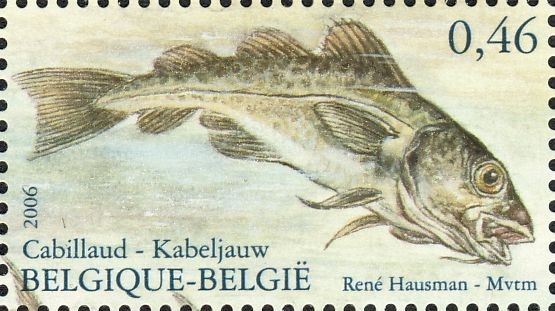
|
Data: 13/05/2006
Emissione: Ittiofauna dei mari del nord Stato: Belgium Nota: Emesso in un foglietto di 5 v. diversi |
|---|
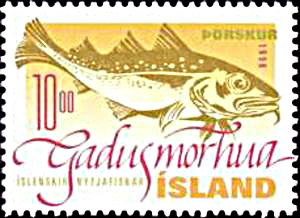
|
Data: 16/04/1998
Emissione: Ittiofauna Stato: Iceland Nota: Emesso in un foglietto di 4 v. diversi |
|---|
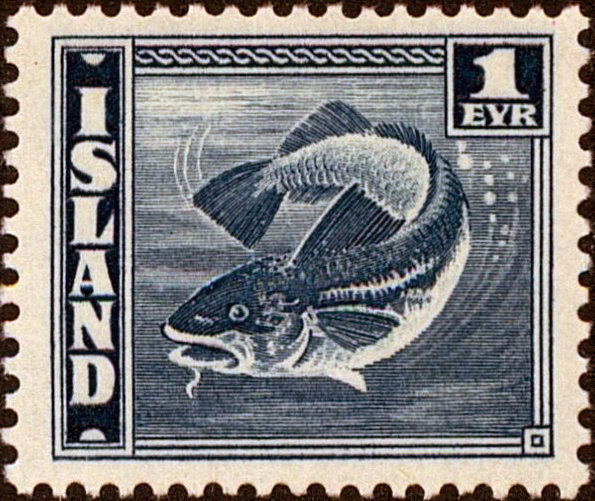
|
Data: 10/05/1939
Emissione: Motivi del Paese Stato: Iceland Nota: Emesso in una serie di 6 v. |
|---|
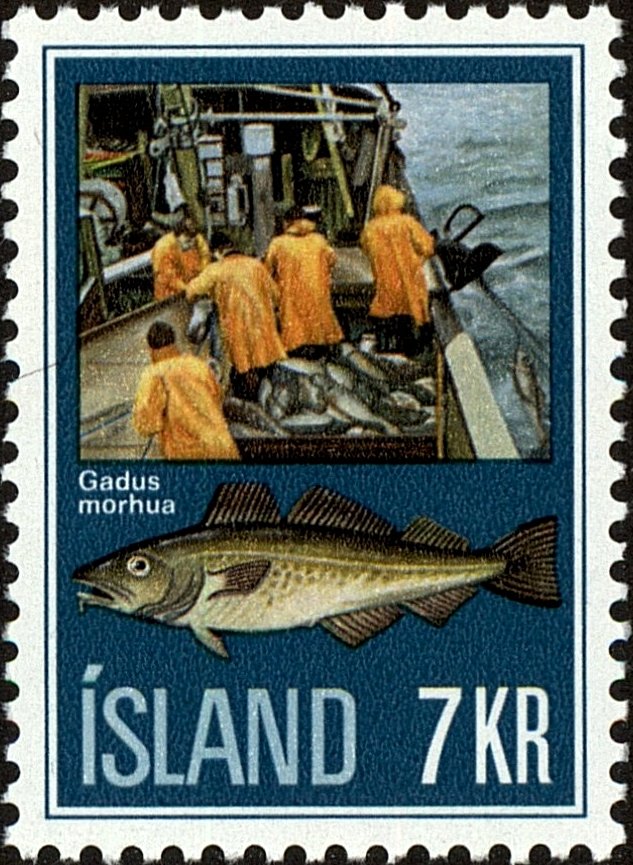
|
Data: 18/11/1971
Emissione: Industria della pesca Stato: Iceland Nota: Emesso in una serie di 3 v. diversi |
|---|
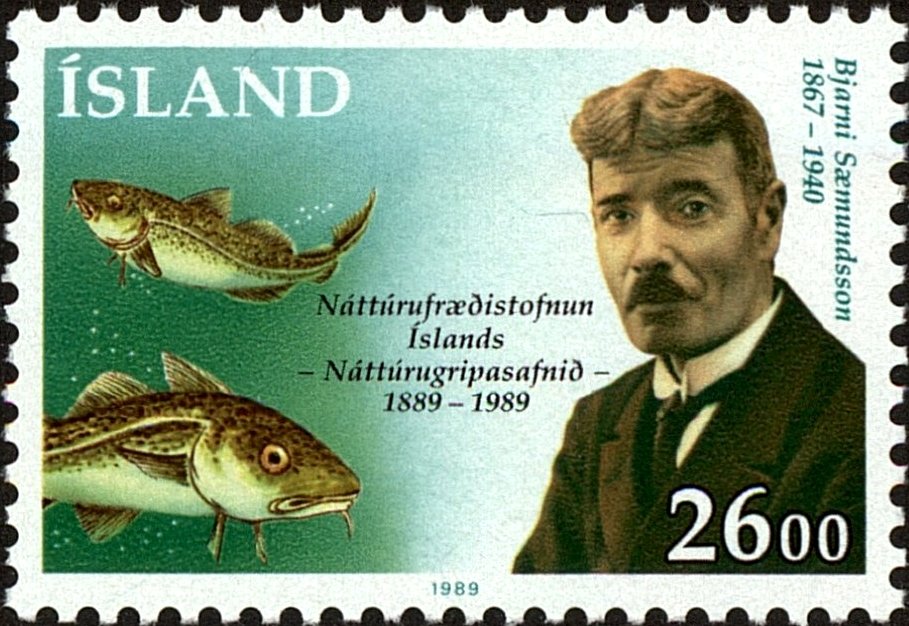
|
Data: 09/11/1989
Emissione: 100° Anniversario della Società di Storia naturale Stato: Iceland Nota: Emesso in una serie di 2 v. diversi |
|---|
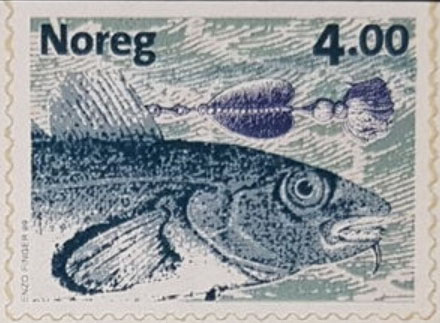
|
Data: 02/01/1999
Emissione: Ittiofauna Stato: Norway Nota: Emesso in un libretto di 2 v. per 4 serie |
|---|
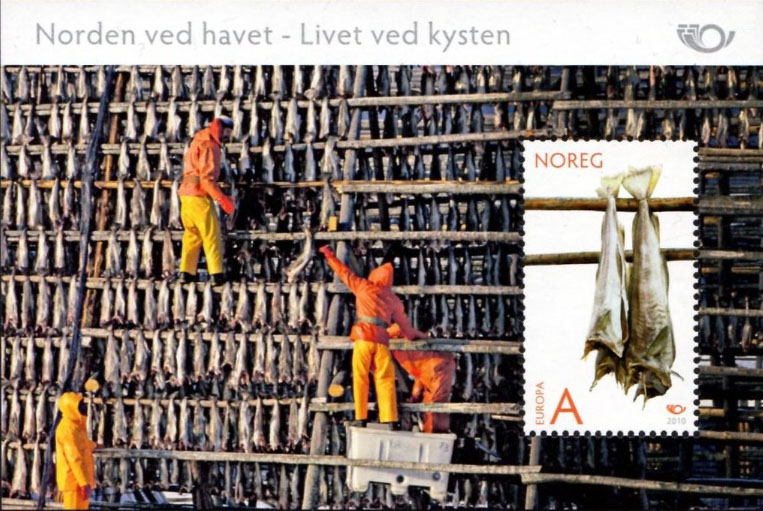
|
Data: 24/03/2010
Emissione: Europa Stato: Norway |
|---|

|
Data: 22/02/1975
Emissione: Sviluppo dell'industria della pesca Stato: Cuba |
|---|